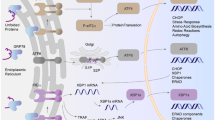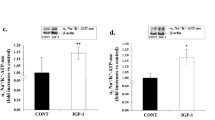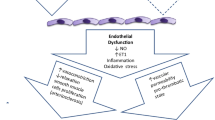Abstract
Pannexin 1 (Panx1) forms plasma membrane channels that release ATP, an important vascular tone regulator. However, despite the abundant expression of Panx1 in the vascular system, its effects on smooth muscle contraction are not evident in all arteries. In this study, we tested the hypothesis that the functional consequences of Panx1 deficiency can be masked by the augmented action of ATP secreted in a Panx1-independent way. Experiments were performed on small mesenteric arteries obtained from Panx1-knockout (Panx1–/–) and C57Bl/6 (Panx1+/+) male mice using wire myography of endothelium-denuded arterial preparations and reverse-transcription quantitative PCR techniques. Arterial contractile responses to phenylephrine did not differ in two experimental groups. Ecto-ATPase inhibitor ARL67156 (100 μM) potentiated the responses to phenylephrine in Panx1+/+ but not in Panx1–/–, while ARL67156 did not affect the contractile responses to the thromboxane A2 receptor agonist in any of the two groups. Contractile responses to exogenous ATP (10 μM) were smaller in Panx1+/+ than in Panx1–/– mice. By contrast, NTPDase1 mRNA content was higher in Panx1+/+ than in Panx1–/– mice. These results suggest that ATP released from smooth muscle cells through Panx1 channels can potentiate contractile responses of murine mesenteric arteries upon activation of α1-adrenoceptors. In Panx1–/– mice an increased arterial ATP sensitivity and diminished NTPDase1 activity may augment the contractile effects of Panx1-independent ATP.
Similar content being viewed by others
References
Panchin Y., Kelmanson I., Matz M., Lukyanov K., Usman N., Lukyanov S. 2000. A ubiquitous family of putative gap junction molecules. Curr. Biol. 10, R473–R474.
Sahu G., Sukumaran S., Bera A.K. 2014. Pannexins form gap junctions with electrophysiological and pharmacological properties distinct from connexins. Sci. Rep. 4, 4955.
Ma W., Compan V., Zheng W., Martin E., North R.A., Verkhratsky A., Surprenant A. 2012. Pannexin 1 forms an anion-selective channel. Pfluegers Arch. 463, 585–592.
Bao L., Locovei S., Dahl G. 2004. Pannexin membrane channels are mechanosensitive conduits for ATP. FEBS Lett. 572, 65–68.
Shestopalov V.I., Panchin Y. 2008. Pannexins and gap junction protein diversity. Cell. Mol. Life Sci. 65, 376–394.
Penuela S., Gehi R., Laird D.W. 2013. The biochemistry and function of pannexin channels. Biochim. Biophys. Acta 1828, 15–22.
Lazarowski E.R. 2012. Vesicular and conductive mechanisms of nucleotide release. Purinergic Signal. 8, 359–373.
Lohman A.W., Billaud M., Isakson B.E. 2012. Mechanisms of ATP release and signalling in the blood vessel wall. Cardiovasc. Res. 95, 269–280.
Burnstock G. 2017. Purinergic signaling in the cardiovascular system. Circ. Res. 120, 207–228.
Ralevic V., Dunn W.R. 2015. Purinergic transmission in blood vessels. Auton. Neurosci. 191, 48–66.
Lohman A.W., Billaud M., Straub A.C., Johnstone S.R., Best A.K., Lee M., Barr K., Penuela S., Laird D.W., Isakson B.E. 2012. Expression of pannexin isoforms in the systemic murine arterial network. J. Vasc. Res. 49, 405–416.
Gaynullina D., Shestopalov V.I., Panchin Y., Tarasova O.S. 2015. Pannexin 1 facilitates arterial relaxation via an endothelium-derived hyperpolarization mechanism. FEBS Lett. 589, 1164–1170.
Gaynullina D., Tarasova O.S., Kiryukhina O.O., Shestopalov V.I., Panchin Y. 2014. Endothelial function is impaired in conduit arteries of pannexin1 knockout mice. Biol. Direct. 9, 8.
Billaud M., Lohman A.W., Straub A.C., Looft-Wilson R., Johnstone S.R., Araj C.A., Best A.K., Chekeni F.B., Ravichandran K.S., Penuela S., Laird D.W., Isakson B.E. 2011. Pannexin1 regulates α1-adrenergic receptormediated vasoconstriction. Circ. Res. 109, 80–85.
Billaud M., Chiu Y.-H., Lohman A.W., Parpaite T., Butcher J.T., Mutchler S.M., DeLalio L.J., Artamonov M.V., Sandilos J.K., Best A.K., Somlyo A.V., Thompson R.J., Le T.H., Ravichandran K.S., Bayliss D.A., Isakson B.E. 2015. A molecular signature in the pannexin1 intracellular loop confers channel activation by the α1 adrenoreceptor in smooth muscle cells. Sci. Signal. 8, ra17.
Angus J.A., Betrie A.H., Wright C.E. 2015. Pannexin-1 channels do not regulate α1-adrenoceptor-mediated vasoconstriction in resistance arteries. Eur. J. Pharmacol. 750C, 43–51.
Angus J.A., Wright C.E. 2015. ATP is not involved in α1-adrenoceptor-mediated vasoconstriction in resistance arteries. Eur. J. Pharmacol. 769, 162–166.
Methven L., Simpson P., McGrath J. 2009. Alpha1A/B-knockout mice explain the native alpha1D-adrenoceptor’s role in vasoconstriction and show that its location is independent of the other α1-subtypes. Br. J. Pharmacol. 158, 1663–1675.
Vial C., Evans R.J. 2002. P2X(1) receptor-deficient mice establish the native P2X receptor and a P2Y6-like receptor in arteries. Mol. Pharmacol. 62, 1438–1445.
Angus J., Wright C. 2016. Novel α1-adrenoceptor antagonism by the fluoroquinolone antibiotic trovafloxacin. Eu. J. Pharmacol. 791, 179–184.
Dvoriantchikova G., Ivanov D., Barakat D., Grinberg A., Wen R., Slepak V.Z., Shestopalov V.I. 2012. Genetic ablation of Pannexin1 protects retinal neurons from ischemic injury. PLoS One. 7, e31991.
Mulvany M.J., Halpern W. 1977. Contractile properties of small arterial resistance vessels in spontaneously hypertensive and normotensive rats. Circ. Res. 41, 19–26.
Kauffenstein G., Drouin A., Thorin-Trescases N., Bachelard H., Robaye B., D’Orléans-Juste P., Marceau F., Thorin E., Sévigny J. 2010. NTPDase1 (CD39) controls nucleotide-dependent vasoconstriction in mouse. Cardiovasc. Res. 85, 204–213.
Kauffenstein G., Fürstenau C.R., D’Orléans-Juste P., Sévigny J. 2010. The ecto-nucleotidase NTPDase1 differentially regulates P2Y1 and P2Y2 receptor-dependent vasorelaxation. Br. J. Pharmacol. 159, 576–585.
Robson S.C., Wu Y., Sun X., Knosalla C., Dwyer K., Enjyoji K. 2005. Ectonucleotidases of CD39 family modulate vascular inflammation and thrombosis in transplantation. Semin. Thromb. Hemost. 31, 217–233.
Teng B., Fil D., Tilley S.L., Ledent C., Krahn T., Mustafa S.J. 2013. Functional and RNA expression profile of adenosine receptor subtypes in mouse mesenteric arteries. J. Cardiovasc. Pharmacol. 61, 70–76.
Koltsova S.V., Maximov G.V., Kotelevtsev S.V., Lavoie J.L., Tremblay J., Grygorczyk R., Hamet P., Orlov S.N. 2009. Myogenic tone in mouse mesenteric arteries: Evidence for P2Y receptor-mediated, Na+, K+ 2Cl–cotransport-dependent signaling. Purinergic Signal. 5, 343–349.
Lévesque S.A., Lavoie É.G., Lecka J., Bigonnesse F., Sévigny J. 2007. Specificity of the ecto-ATPase inhibitor ARL 67156 on human and mouse ectonucleotidases. Br. J. Pharmacol. 152, 141–150.
Villa-Bellosta R., Wang X., Millan J.L., Dubyak G.R., O’Neill W.C. 2011. Extracellular pyrophosphate metabolism and calcification in vascular smooth muscle. Am. J. Physiol. 301, H61–H68.
Bao R., Shui X., Hou J., Li J., Deng X., Zhu X., Yang T. 2016. Adenosine and the adenosine A2A receptor agonist, CGS21680, upregulate CD39 and CD73 expression through E2F-1 and CREB in regulatory T cells isolated from septic mice. Int. J. Mol. Med. 38, 969–975.
Westfall T.D., Kennedy C., Sneddon P. 1996. Enhancement of sympathetic purinergic neurotransmission in the guinea-pig isolated vas deferens by the novel ecto-ATPase inhibitor ARL 67156. Br. J. Pharmacol. 117, 867–872.
Long J.B., Segal S.S. 2009. Quantifying perivascular sympathetic innervation: Regional differences in male C57BL/6 mice at 3 and 20 months. J. Neurosci. Methods. 184, 124–128.
Takahashi-Sato K., Murakawa M., Kimura J., Ito M., Matsuoka I. 2013. Loss of ectonucleotidases from the coronary vascular bed after ischemia–reperfusion in isolated rat heart. BMC Cardiovasc. Disord. 13, 53.
Crikis S., Lu B., Murray-Segal L. M., Selan C., Robson S.C., D’Apice A.J.F., Nandurkar H.H., Cowan P.J., Dwyer K.M. 2010. Transgenic overexpression of CD39 protects against renal ischemia–reperfusion and transplant vascular injury. Am. J. Transplant. 10, 2586–2595.
Souza C.G., de Böhmer A.E., Müller A.P., Oses J.P., Viola G.G., Lesczinski D.N., Souza D.G. de Knorr L., Moreira J.D., Lhullier F., Souza D.O., Perry M.L.S. 2010. Effects of a highly palatable diet on lipid and glucose parameters, nitric oxide, and ectonucleotidases activity. Appl. Physiol. Nutr. Metab. 35, 591–597.
Bergamin L.S., Braganhol E., Zanin R.F., Edelweiss M.I.A., Battastini A.M.O. 2012. Ectonucleotidases in tumor cells and tumor-associated immune cells: An overview. J. Biomed. Biotechnol. 2012, 959848.
Author information
Authors and Affiliations
Corresponding author
Additional information
Original Russian Text © O.O. Kiryukhina, D.K. Gaynullina, Y.V. Panchin, V.I. Shestopalov, O.S. Tarasova, 2017, published in Biologicheskie Membrany, 2017, Vol. 34, No. 6, pp. 137–146.
Rights and permissions
About this article
Cite this article
Kiryukhina, O.O., Gaynullina, D.K., Panchin, Y.V. et al. Alterations of the Purinergic Regulation in Mesenteric Arteries of Pannexin-1-Knockout Mice. Biochem. Moscow Suppl. Ser. A 12, 62–69 (2018). https://doi.org/10.1134/S1990747818010075
Received:
Accepted:
Published:
Issue Date:
DOI: https://doi.org/10.1134/S1990747818010075




